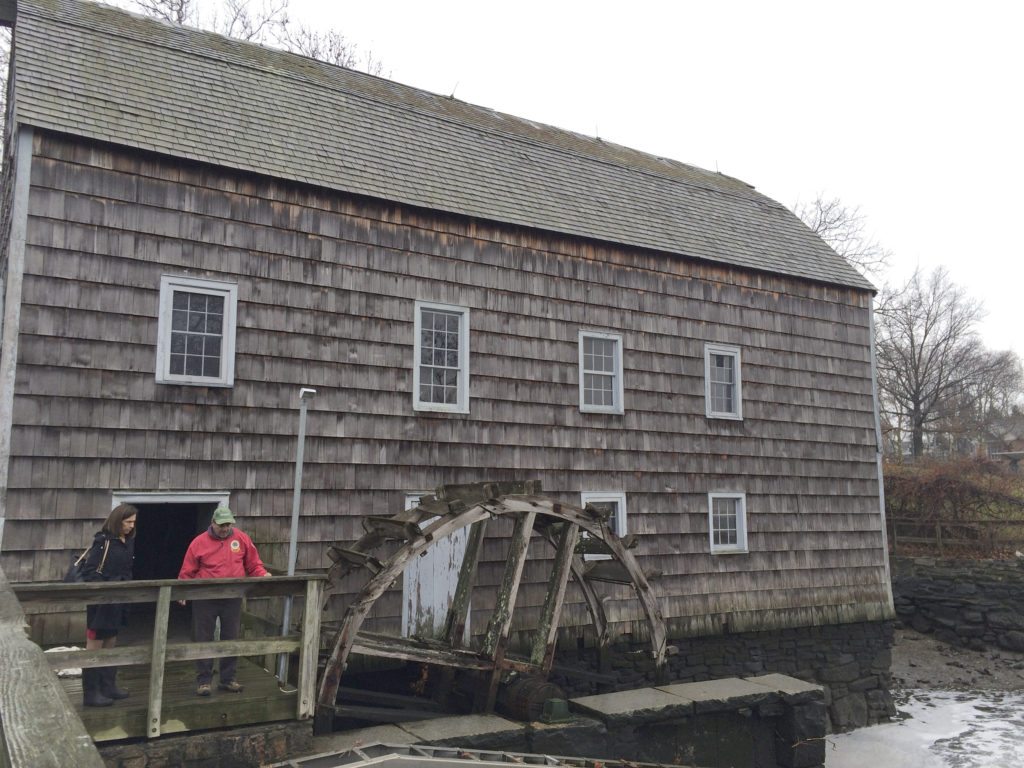 For those who appreciate history and are always looking for ways to preserve the past, the new efforts to restore the historic Saddle Rock Grist Mill becomes an important project for Great Neck. A major restoration effort is underway, spearheaded by the Great Neck Historical Society, Nassau County Legislator Ellen Birnbaum and Saddle Rock Mayor Dan Levy. At the Great Neck Village Association’s Feb. 23 meeting, Historical Society President Alice Kasten told the assembled officials that the community has begun a project to restore this Nassau County-owned grist mill that was built in the 1700s.
For those who appreciate history and are always looking for ways to preserve the past, the new efforts to restore the historic Saddle Rock Grist Mill becomes an important project for Great Neck. A major restoration effort is underway, spearheaded by the Great Neck Historical Society, Nassau County Legislator Ellen Birnbaum and Saddle Rock Mayor Dan Levy. At the Great Neck Village Association’s Feb. 23 meeting, Historical Society President Alice Kasten told the assembled officials that the community has begun a project to restore this Nassau County-owned grist mill that was built in the 1700s.
The Grist Mill, which was added to the National Register of Historic Places in 1978, has been closed for about 20 years, according to Kasten, and neglected. At one time, the mill was open to classes of school children. The youngsters would enjoy a real tour of a working grist mill and then take home a small bag of ground flour. Both Kasten and Levy said it is “a shame” to lose this piece of history and Levy said that a working mill gives visitors a “view of how people lived on Long Island” so long ago.
Birnbaum took up the cause in December, contacting the Nassau County Department of Recreation, Parks and Museums to arrange a site visit of the Grist Mill to begin the process of reopening the museum. Birnbaum and Levy, and a large contingent of county officials and like-minded historians, visited the mill and saw firsthand the damage, due to storms (Superstorm Sandy) and neglect. Both noted that the county is the body that can apply for funds for such storm-ravaged sites.
Birnbaum, who represents Great Neck in the Nassau County Legislature, told the Great Neck Record of her concerns, terming the Grist Mill “a historic treasure in our community.” She emphasized the mill’s importance to the community: “There are signs on many streets in Great Neck leading to the Grist Mill, as if it is a tourist attraction ready to receive visitors…I am determined to see that it is once again open for school children and adults to learn about the important role that this mill played.” However, Birnbaum did add that it is unclear how much funding would be necessary for the complete restoration.
And now, it seems that the county is ready to step up to the plate. Mary Studdert, from the county’s department of public works, told the Record that the mill is “of great importance” and that together with the village, they are in the process of planning restoration. Studdert said that the county is also working with FEMA to secure rehabilitation funds for Sandy-related damage and that in the spring, the county will be applying for available grant funds through the NYS Historical Society.
“We want to see a living, functioning museum,” Kasten said. She has already met with the Saddle Rock Elementary School decision making committee, asking for involvement via an “awareness campaign,” as the JFK Elementary School has done to help restore the Stepping Stones Lighthouse. Saddle Rock Principal Eric Nezowitz is on board, working to involve his students in such an awareness campaign.
In her concluding remarks to the GNVOA, Kasten said that the “best way to fund the Grist Mill restoration is by grants (applied for by the county).”
The Saddle Rock Grist Mill is a historic grist mill building, a two-and-a-half story gambrel-roofed structure, adjacent to a stream-fed millpond, that is supplemented by tidal water impounded by the dam. Dating back to the 18th century, it is the only extant, operating tidal grist mill on Long Island.
Anyone wishing further information or to help in the restoration, go to www.greatneckhistorical.org or contact Alice Kasten at alicekasten@gmail.com.































